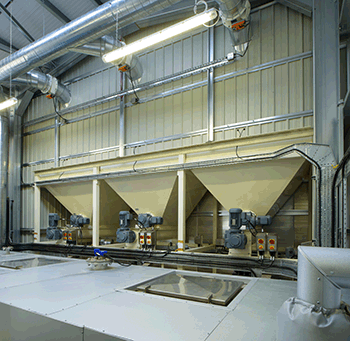AD system supplied by Clearfleau is turning U.K. candy plant waste into energy.
A
Nestle candy production facility in Fawdon, United Kingdom, is the site of an anaerobic digestion (AD) system that is converting 200,000 liters per day of process byproducts into a renewable energy.

The system, installed by
Clearfleau, Bracknell, U.K., has now been in place for one year. Clearfleau says the onsite bioenergy plant’s results “are contributing to Nestlé's efforts to develop environmentally sustainable manufacturing at Fawdon, as a beacon site for the overall organization.”
The plant’s feedstock includes wash waters from the site and 1,200 metric tons of residual byproducts and ingredients generated yearly.
The biogas produced is fuelling a combined heat and power (CHP) engine, which produces 200 kilowatts of electricity used in Nestle’s confectionery production process. That represents about 8 percent of the factory’s power requirements, cutting the annual electricity bill by about £100,000 ($US157,000) each year.
Previously, production residues from Fawdon were discharged to sewers or fed to pigs at nearby farms. Following the installation of the AD plant, all biodegradable production residues are converted into energy at the factory site.
Clearfleau used its mobile trial unit to showcase the digestion technology to the management and workforce at the Fawdon site before construction as a way to optimize the process design.
“We chose an innovative British bioenergy technology provider because we wanted a partner with experience who would design a plant to meet our specific needs,” says Inder Poonaji, Nestlé's head of sustainability. “Onsite treatment of production residues will help us reduce the wider environmental impact of our business and meet our sustainability goals. By working with Clearfleau, we continue to reduce our carbon footprint and generate value from food production residues.”
Clearfleau estimates the payback period on Nestlé's investment in its AD plant will be four to five years.
“Clearfleau was delighted to be selected by Nestlé to deliver this important plant, and we very much appreciate their collaborative approach to the delivery of this project,” says Craig Chapman, Clearfleau’s CEO. “For Nestlé, what was previously a processing overhead is now a valuable financial and environmental asset. The advantages of anaerobic digestion are becoming more apparent and we are currently building AD plants on dairy, distillery, food and biofuel manufacturing sites.”
